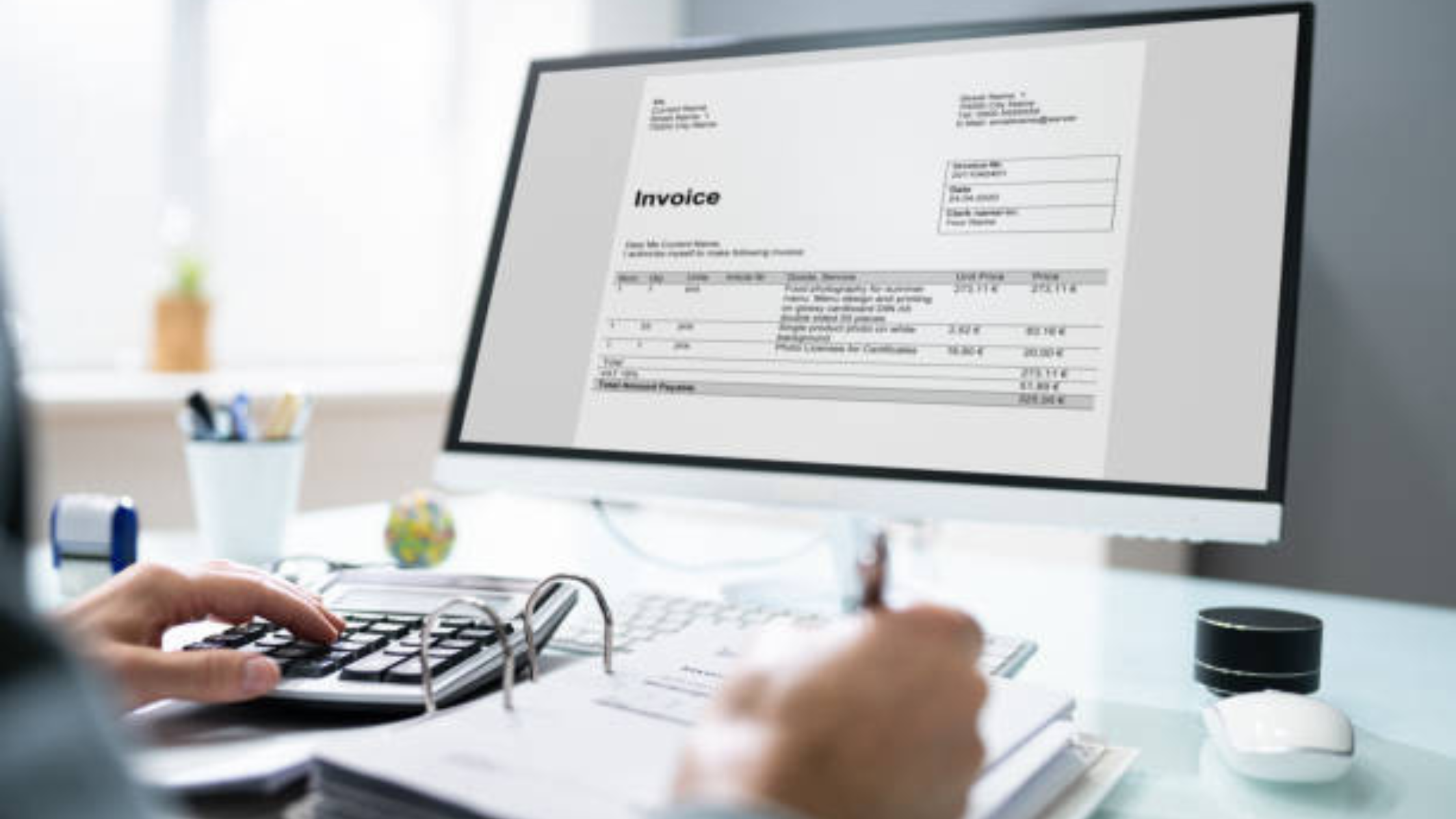Streamline Transportation Bill Generation Process

Efficient transportation bill generation is crucial for businesses to maintain a smooth operation. The process of creating bills for transportation services can often be complex and time-consuming, leading to delays and errors. To address this challenge, streamlining the transportation bill generation process has become a top priority for many organizations. By optimizing this process, businesses can not only save time and resources but also improve accuracy and customer satisfaction. This introduction explores the significance of streamlining transportation bill generation and the benefits it brings to businesses in terms of operational efficiency and customer service.
Every minute saved counts. Streamlining the transportation bill generation process allows companies to operate more efficiently and effectively. By automating certain steps and implementing standardized procedures, businesses can reduce the margin of error and ensure timely bill generation. This not only enhances internal operations but also reflects positively on customer interactions, fostering better relationships and trust. Ultimately, optimizing transportation bill generation contributes to overall business success and sustainability.
Challenges in Traditional Bill Generation
Manual Data Entry Errors
In the traditional bill generation process, businesses often face numerous challenges that can impact efficiency, accuracy, and customer satisfaction. One of the most common issues is manual data entry errors, where human mistakes can lead to incorrect billing information. This not only results in billing discrepancies but also requires additional time and effort to rectify these errors.
Time-Consuming Processes
Another challenge is the time-consuming nature of traditional bill generation processes. From gathering data to creating invoices and sending them to customers, each step can be labor-intensive and prone to delays. This can hinder cash flow and create bottlenecks in the billing cycle, affecting the overall financial health of the business.
Lack of Automation
Moreover, the lack of automation in traditional bill generation can further exacerbate these challenges. Without automated systems in place, businesses may struggle to streamline their billing processes, leading to inefficiencies and increased costs. Automation can help reduce manual intervention, minimize errors, and improve the speed and accuracy of bill generation.
Where efficiency and accuracy are paramount, the challenges posed by traditional bill generation methods cannot be overlooked. Manual data entry errors remain a significant issue, with even minor mistakes having the potential to snowball into major discrepancies. These errors not only impact the business's financial records but also erode customer trust and satisfaction.
The time-consuming nature of traditional bill generation is another obstacle that businesses must navigate. In an era where speed and agility are key drivers of success, delays in invoicing can have far-reaching consequences. From delayed payments to strained vendor relationships, the repercussions of inefficient billing processes can extend beyond just internal operations.
Furthermore, the absence of automation in bill generation can impede scalability and growth. As businesses expand, manual processes become increasingly unsustainable, leading to a higher risk of errors and operational bottlenecks. By embracing automation technologies, organizations can not only streamline their billing workflows but also free up resources to focus on strategic initiatives.
The challenges in traditional bill generation are multifaceted and require a holistic approach to resolution. By leveraging technology, implementing best practices, and prioritizing accuracy and efficiency, businesses can overcome these obstacles and pave the way for a more streamlined and effective billing process.
Advantages of Utilizing a Transportation Bill Generator
When delving into the advantages of utilizing a transportation bill generator within business operations, it becomes apparent that this automated tool offers a plethora of benefits that can significantly boost efficiency and effectiveness. One of the primary advantages is the heightened accuracy and reduced errors achieved through automated calculations and standardized templates. By harnessing these functionalities, businesses can not only reduce the chances of invoicing errors but also save valuable time that would otherwise be spent on manual calculations and corrections. Consequently, organizations can experience a substantial improvement in both time management and cost efficiency by streamlining the invoicing process.
Improved Accuracy and Efficiency
Moreover, the incorporation of process automation through a transportation bill generator plays a vital role in saving time and ensuring seamless organization. By automating the creation of transportation bills, companies eliminate the need for manual data entry and processing, enabling employees to focus on more strategic tasks. This automation not only boosts operational efficiency but also fosters a more professional and structured workflow, leading to increased client satisfaction.
Optimization of Tax Savings
In addition to these benefits, leveraging a transportation bill generator can assist in optimizing tax savings through the efficient generation of LTA bills. By precisely capturing and categorizing transportation-related expenses, businesses can ensure compliance with tax regulations and maximize their tax deductions. This not only results in potential cost savings but also promotes financial transparency and accountability within the organization.
Enhanced Transportation Efficiency
Furthermore, a notable advantage of utilizing a transportation bill generator is the capability to enhance transportation efficiency. Through automating the billing process and producing detailed reports, companies gain valuable insights into their transportation costs and performance metrics. This data-centric approach empowers businesses to identify areas for improvement, minimize inefficiencies, and make informed decisions to enhance overall transportation operations.
Conclusion
The benefits derived from implementing a transportation bill generator go beyond automated invoicing. From improving accuracy and reducing errors to saving time, optimizing tax savings, and maximizing transportation efficiency, this tool proves indispensable for businesses aiming to streamline operations, enhance financial management, and elevate client satisfaction to unprecedented levels.
Key Features in a Transportation Bill Generator
In this section, we will delve into the essential key features that a modern transportation bill generator should offer.
Customization Options for Flexibility
Customization Options for Flexibility play a crucial role in meeting the diverse needs of transportation companies. By allowing users to tailor the bill generator to their specific requirements, businesses can ensure maximum efficiency and accuracy in their billing processes.
Seamless Integration Capabilities
Moreover, Seamless Integration Capabilities are vital for ensuring smooth operations within a transportation company. A robust transportation bill generator should seamlessly integrate with existing software systems and platforms, such as fleet management or accounting software, to streamline workflows and data exchange. This integration not only enhances operational efficiency but also reduces manual errors and saves time.
Advanced Reporting and Analytics Tools
Lastly, Advanced Reporting and Analytics Tools are indispensable for gaining valuable insights into transportation operations. With advanced reporting features, businesses can track key performance indicators, monitor billing trends, and analyze operational data to make informed decisions. Analytics tools offer predictive capabilities that help in forecasting demand, optimizing routes, and identifying cost-saving opportunities.
Enhanced Security Measures
In addition to the key features mentioned above, a reliable transportation bill generator should prioritize Enhanced Security Measures. Data security is paramount in the transportation industry due to the sensitive nature of billing information. Implementing robust security protocols, encryption methods, and access controls ensures that sensitive data remains protected from cyber threats and unauthorized access.
User-Friendly Interface
Furthermore, a User-Friendly Interface is essential for ensuring that employees can easily navigate and utilize the transportation bill generator. Intuitive design, customizable dashboards, and easy-to-use features enhance user experience and facilitate efficient billing operations.
Mobile Accessibility
Considering the dynamic nature of the transportation industry, Mobile Accessibility is becoming increasingly important. A transportation bill generator with mobile capabilities allows users to manage billing tasks on the go, enabling real-time updates, approvals, and access to critical information from anywhere.
A comprehensive transportation bill generator should offer a range of key features, including customization options, integration capabilities, advanced reporting tools, enhanced security measures, user-friendly interface, and mobile accessibility. By incorporating these features, transportation companies can streamline their billing processes, improve operational efficiency, and make data-driven decisions for sustainable growth and success.
Implementing a Transportation Bill Generator
Assessing Current Processes and Needs
In order to successfully implement a transportation bill generator for your business, it is crucial to start by assessing your current processes and needs. This involves evaluating the existing methods of generating transportation bills, identifying pain points, and understanding what improvements are necessary. By conducting a thorough assessment, you can pinpoint areas that require enhancement and tailor the implementation process to address specific challenges effectively. Consider involving key stakeholders from different departments to gain a comprehensive understanding of the requirements and ensure that the solution meets the needs of all parties involved.
Selecting the Right Tool for Your Business
Once you have a clear understanding of your current processes and needs, the next step is to select the right tool for your business. It is essential to research different transportation bill generator options available in the market and compare their features, pricing, and compatibility with your existing systems. Moreover, consider future scalability and integration capabilities to ensure that the tool can grow with your business. Don't hesitate to request demos or trials to experience the tools firsthand before making a decision. Additionally, consult with IT professionals or software experts to get their insights on the best fit for your business.
Training Staff for Successful Adoption
The final piece of the puzzle in implementing a transportation bill generator is training your staff for successful adoption. Develop a comprehensive training program that goes beyond basic functionalities to cover advanced features and troubleshooting scenarios. Consider creating user manuals or video tutorials to facilitate self-paced learning for employees. Encourage active participation and feedback during training sessions to address any concerns or questions promptly. Moreover, designate super-users within each team who can provide ongoing support and guidance to their colleagues after the implementation phase. By investing in thorough training, you can ensure smooth adoption and maximize the efficiency gains from the transportation bill generator across your organization.
Ensuring Regulatory Compliance
Compliance with transportation regulations is a critical aspect of implementing a transportation bill generator. Ensure that the tool you choose adheres to industry standards and regulations to avoid any legal issues. Familiarize yourself with the necessary documentation and reporting requirements to guarantee that your transportation billing processes comply with local and international laws. Consider consulting legal experts or industry authorities to stay updated on any changes in regulations that may impact your operations.
Monitoring Performance and Continuous Improvement
After the implementation of a transportation bill generator, it is essential to monitor its performance and seek areas for continuous improvement. Establish key performance indicators (KPIs) to measure the effectiveness of the tool in streamlining billing processes, reducing errors, and enhancing overall efficiency. Regularly review the generated bills for accuracy and timeliness, and gather feedback from staff and customers to identify any recurring issues or areas for enhancement. Implement a feedback loop to incorporate suggestions for improvement and ensure that your transportation bill generator evolves with the changing needs of your business and industry.
Leveraging Analytics for Insights and Optimization
Utilize the data generated by your transportation bill generator to gain valuable insights and optimize your operations. Analyze billing trends, transportation costs, and payment cycles to identify opportunities for cost savings, route optimization, or service enhancements. Consider implementing analytics tools or partnering with data analysis experts to delve deeper into the data and extract actionable recommendations. By leveraging analytics, you can make informed decisions, improve operational efficiency, and stay ahead of competitors in the transportation industry.
Embracing Automation and Integration
To further enhance the efficiency of your transportation billing processes, consider embracing automation and integration capabilities offered by modern tools. Automate repetitive tasks such as data entry, invoice generation, or payment processing to reduce manual errors and save time. Explore opportunities to integrate your transportation bill generator with other business systems, such as accounting software or inventory management tools, to streamline data flow and ensure data consistency across departments. By embracing automation and integration, you can create a seamless workflow that eliminates silos, improves collaboration, and drives overall business productivity.
Fostering a Culture of Innovation and Adaptability
Incorporate a culture of innovation and adaptability within your organization to support the successful implementation of a transportation bill generator. Encourage employees to explore new ideas, experiment with different approaches, and adapt to changing market dynamics. Foster a collaborative environment where feedback is valued, and continuous learning is encouraged. Create avenues for cross-departmental collaboration and knowledge sharing to break down silos and promote a culture of innovation. By fostering a culture of innovation and adaptability, you can position your business for long-term success and ensure that your transportation billing processes remain agile and responsive to evolving customer needs and industry trends.
Conclusion
Implementing a transportation bill generator is a multifaceted process that requires careful planning, thorough assessment, and strategic execution. By assessing your current processes and needs, selecting the right tool, training your staff effectively, ensuring regulatory compliance, monitoring performance, leveraging analytics, embracing automation and integration, and fostering a culture of innovation, you can streamline your billing processes, drive operational efficiency, and position your business for growth in the competitive transportation industry. Stay proactive, stay informed, and stay adaptable to navigate the complexities of transportation billing and unlock new opportunities for success.
Future Trends in Bill Generation
As technology continues to advance, the way bills are generated is also evolving. In this blog section, we will delve deeper into the future trends in bill generation, shedding light on the integration of AI and Machine Learning, as well as the utilization of Blockchain for enhanced security.
Integration of AI and Machine Learning
The integration of Artificial Intelligence (AI) and Machine Learning is revolutionizing the billing landscape. AI algorithms can analyze vast amounts of data to identify patterns and anomalies, enabling organizations to generate bills more efficiently and accurately. Machine Learning complements AI by continuously learning from billing data, optimizing processes, and adapting to changing billing requirements. The synergy between AI and Machine Learning in bill generation not only streamlines operations but also enhances decision-making by providing insights into customer billing preferences and behaviors.
Utilizing Blockchain for Enhanced Security
Blockchain technology is disrupting traditional billing systems by offering unparalleled security and transparency. By leveraging Blockchain, billing data is stored in a decentralized and immutable ledger, safeguarding it from unauthorized alterations or breaches. Each billing transaction is cryptographically linked to the previous one, creating a chain of secure blocks that ensure data integrity and auditability. The adoption of Blockchain in bill generation not only fortifies data security but also instills trust among stakeholders by promoting transparency and accountability.
Personalization and Customer Engagement
Along with AI, Machine Learning, and Blockchain, the future of bill generation lies in personalization and customer engagement. Businesses are increasingly tailoring bills to individual preferences, providing detailed insights into usage patterns, cost breakdowns, and personalized recommendations for cost savings. By engaging customers through interactive billing portals and mobile apps, organizations can foster stronger relationships, improve customer satisfaction, and encourage timely payments.
Sustainability and Green Billing
Another emerging trend in bill generation is the emphasis on sustainability and eco-friendly practices. Companies are transitioning towards paperless billing options, reducing environmental impact, and promoting digital initiatives to minimize waste. By implementing green billing strategies, organizations not only contribute to environmental conservation but also enhance their corporate social responsibility efforts.
The convergence of AI, Machine Learning, and Blockchain technologies is reshaping the landscape of bill generation, offering unprecedented efficiency, security, and innovation. By embracing these future trends and incorporating personalized, sustainable practices, businesses can optimize their billing processes, enhance customer experiences, and stay ahead in a rapidly evolving digital economy.
Conclusion
Streamlining the transportation bill generation process is crucial for improving efficiency, reducing errors, and cutting costs in the transportation industry. By implementing automated systems, integrating data across platforms, and empowering employees with the right tools, companies can enhance their billing operations significantly. Embracing technology and optimized processes not only benefits the organization but also enhances customer satisfaction and overall business performance. It is evident that investing in modernizing bill generation procedures is a strategic move that can drive success and competitiveness in the transportation sector.







